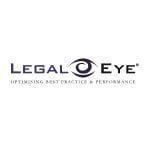When it comes to AML compliance, law firms can no longer rely on a box ticking exercise. Today, both the SRA and the CLA expect firms to have policies and training that are agile and adaptive to the changing ways of money laundering and criminal behaviour.
The CLC’s Annual Risk Agenda emphasises the need for licensed conveyancers to understand the importance of tackling economic crime. In particular, the report highlights that CLC-regulated firms must have practice-wide risk assessments (PWRA) that are reviewed annually (or when there is a significant development, such as new legislation or a change to the business). Indeed, the CLC believes that “a poor PWRA is often emblematic of a poor AML culture at a practice“, with a 2022 analysis of practice inspections finding “inadequate PWRAs present in 68% of practices that had been found to be non-compliant with AML rules.”
The SRA is also advocating a bespoke, rather than a cookie-cutter approach to AML. Its AML Sectoral Risk Assessment highlights the need for firms to have a realistic awareness of the risks posed, and the ability to differentiate between clients when assessing such risks.
At a recent SRA conference, the regulator revealed that AML training and desk-based reviews will be two of its key focuses in 2024, and firms must take heed. Not least because the Economic Crime and Corporate Transparency Act received Royal Assent in October 2023, with the new legislation giving the SRA the power to implement unlimited fines for economic crimes.
Over the next 12 months and beyond, both the CLA and the SRA will continue to emphasise the importance of robust PWRA, that take into account (amongst other factors):
- the nature of the firm
- the type of work it does
- the culture of the firm
- the people who work there,
- the clients served.
Successful AML compliance will also require firms to keep up to date with the latest threats, trends, regulations and best practices. There is no one-size-fits-all approach to AML. And the penalties for non-compliance are likely to be substantial.
Is your law firm risk-ready?
Legal Eye’s new online AML training course for money laundering reporting officers (MLROs) and Deputy MLROs will help ensure that you are fully prepared for a visit from the regulator. Designed to meet regulator expectations, with a focus on realistic risk awareness, our course helps compliance officers align their risk assessments with the latest SRA and CLA requirements.
Covering key topics such as roles and responsibilities, ID verification, source of funds, sanctions, and more, we offer training on all the essential elements. And following a scoping call, we can include additional areas tailored to suit your firm’s specific requirements.
Developed to help build a culture of learning and diligence, not just for the compliance officer but for the firm as a whole, contact us at bestpractice@legal-eye.co.uk or call 020 3051 2049 for details.
This article was submitted to be published by Legal Eye as part of their advertising agreement with Today’s Conveyancer. The views expressed in this article are those of the submitter and not those of Today’s Conveyancer.




















